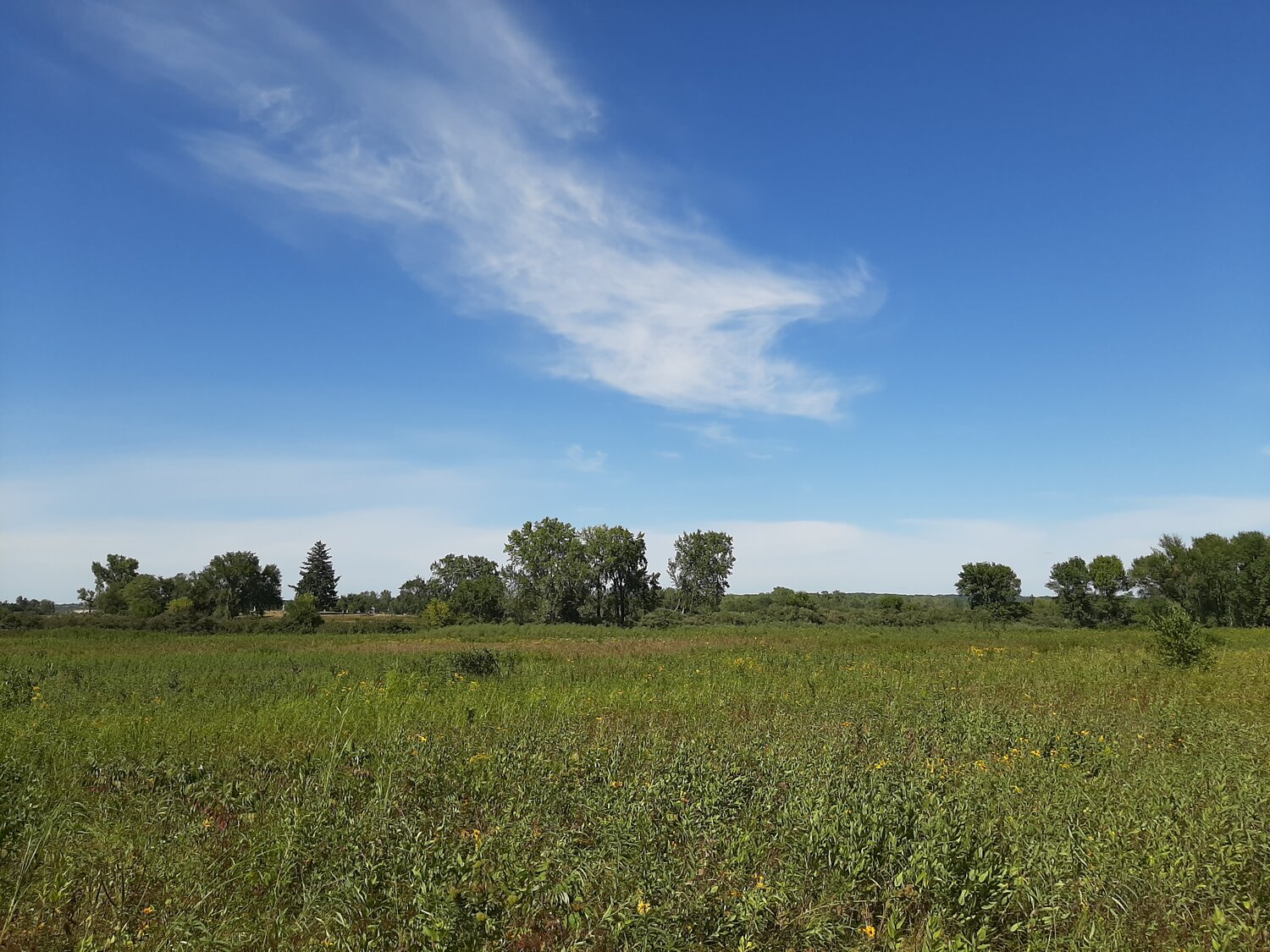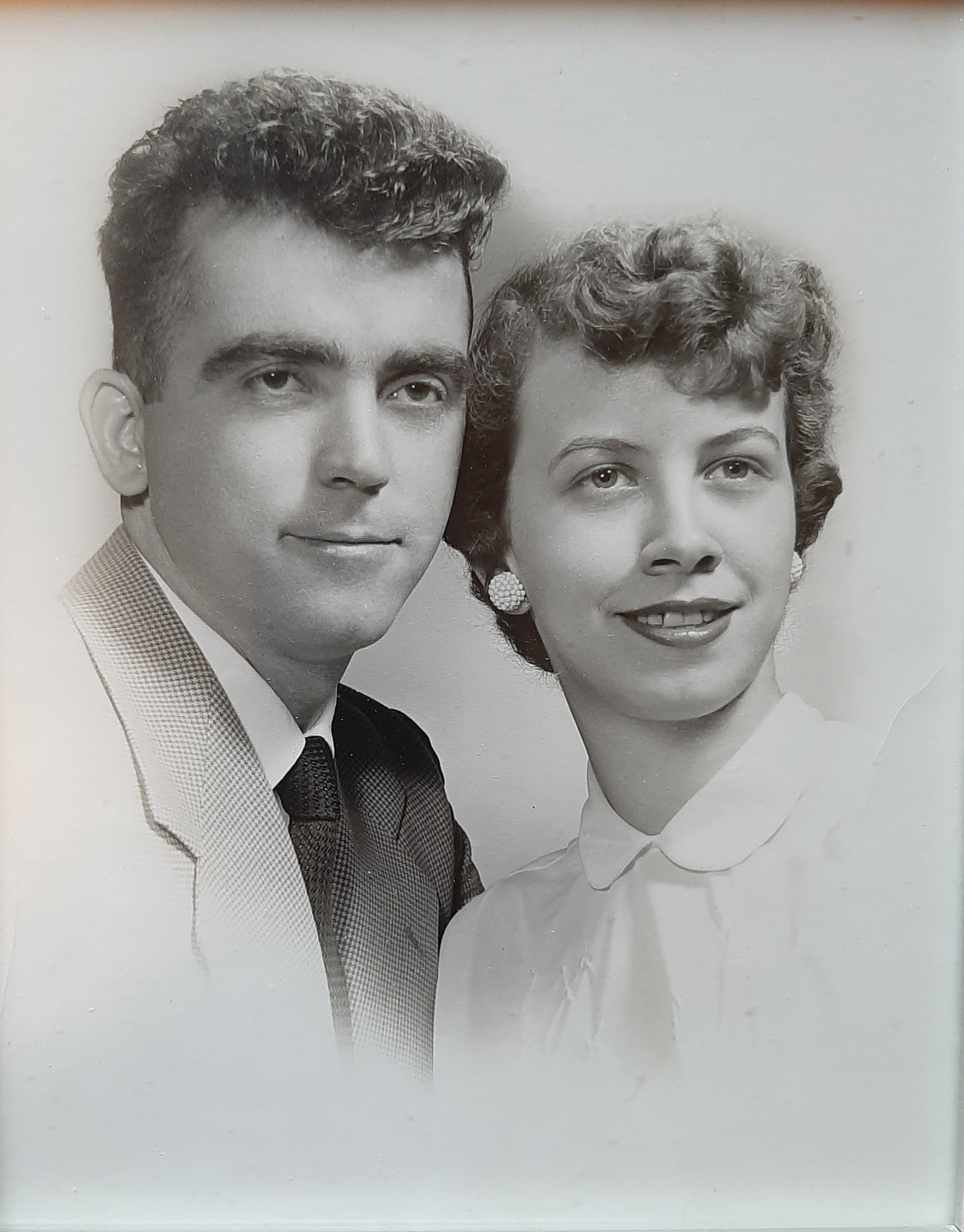Fatherhood & Sonhood
In 1995, at my sister Julie’s wedding - Dad, me, Uncle Dick (Dad’s only sibling).
“How can I try to explain?/ When I do he turns away again/ It’s always been the same/ Same old story/ From the moment I could talk/ I was ordered to listen” –Cat Stevens, “Father and Son”
As is true for many, my relationship with my father was complicated. Starting when I was a high school freshman in 1968, he and I would argue over the path our country was taking. Usually stirred up during dinner, these arguments often became quite heated. The MyLai massacre, anti-war protests on campuses and civil rights protests in cities, the cultural revolution of Woodstock and the Summer of Love, feminism and the Equal Rights Amendment, gay rights and the Stonewall demonstrations, Chicago police cracking protestors’ heads at the Democratic National Convention, National Guard shooting students at Jackson State and nearby Kent State. All these became the bases for our generational clashes of opinions, him defending the status quo, me demanding change.
Although neither of us ever admitted it, we were stimulated by this long-drawn-out contest of wills. At the same time, we disliked each other for what we became when we argued – obstinate, relentless, self-centered. One of the rules of our supper table was that we had to ask to be excused. I now want to take a moment to apologize to my nine siblings. Unable to get a word in edgewise, they were often forced to bear witness to these protracted altercations fueled by our mutual stubbornness.
One of the first poems I wrote in high school, later published in a pamphlet by Brother Al Behm, a Glenmary friend.
Of course, life with my father wasn’t all contention. In particular, I admired his ability to enjoy his life. I have in mind a picture of him dancing with my youngest sister, Christina, at her wedding reception. It was the last summer before his death. Battling liver cancer and undergoing chemotherapy treatments, he somehow looked robust and vigorous in his tuxedo. Fully in the moment as he guided his daughter around the spotlight of the dance floor, he had a style distilled from the simple pleasure of living in this world.
John David Duer was born in Akron, Ohio, in 1924. His father, Johann Baptiste Duer, had immigrated from Hard, a small Austrian fishing village on the Bodensee. With his brother Adolph, he started a construction company that still exists today. But he died before his younger son had turned one year old.[1] My grandmother moved back home to East Bernstadt, in rural eastern Kentucky, where she raised her two sons with the help of her brother Willie.
When John finished high school, the family moved back to Akron, into a three-story brick duplex my grandmother had inherited from her husband. John started taking classes at the University of Akron and working at the Firestone Tire & Rubber factory,[2] but soon enlisted in the Air Force. By 1943, he was flying missions over Western Europe from England, a tailgunner in a B-24 Liberator bomber. Their plane was shot down once, but he survived unharmed. Like many vets, he never talked about his war experiences.
After the war, John used the GI Bill to earn a business degree from Marquette University in Milwaukee. Soon after he returned to Akron, he landed a job as a liquor salesman for the Seagram Company. It was a good match for my outgoing and voluble father. He took an interest in the people he encountered during his workday. The job entailed visiting restaurants and bars in his Ohio territory, schmoozing the owners and bartenders, and persuading them to put his brands in the well. When he was successful, the martini a person ordered was made with Wolfschmidt Vodka or Burnett’s London Dry Gin, the manhattan was made with Carstairs White Seal Whiskey, and his sales numbers rose.
I sensed that he enjoyed those bachelor years. He had a number of cousins in the Akron area who were lifelong friends. When he hung out with them later in his life, I’d sometimes hear them refer to him as Schwing. I never knew the origins of that nickname, and this was decades before the movie Wayne’s World popularized the word, but I always wondered. In any case, he met and married my mother in 1953, and I was born one year later.
John David Duer and Rose Marie Trares, married in 1953.
My father was a notoriously halfass do-it-yourselfer. He never balked at doing any car or house repair project himself. In those days before YouTube tutorials, he might’ve asked for advice from a friend or the guy at the hardware store. More often than not, he just figured it out on his own. The results were less than impressive. When he fixed a toilet, it would flush, but only if we jiggled the handle three times beforehand. He built a shower in our basement laundry room that consisted of a two-foot-high cinder block wall, a flimsy shower curtain, and a wood pallet floor that grew slimy over time. Uncomfortably spartan, it taught us to be adaptable to a wide range of living conditions.
He usually expected my help on these projects, an assignment that mostly consisted of me watching him. He thought I’d learn something from that, but I was just bored. It felt like penance for a sin I didn’t remember committing. I hated watching him stumble through these repair projects, and he often ended up yelling at me and banishing me from the work site, which suited me just fine. And yet, in my adulthood, I became an equally determined and even-more-hapless do-it-yourselfer. But every time I change the oil on my car, I tip my cap to Dad. And my daughter, Emma, who has proven to be twice as handy as either of us, claims I showed her how to confidently take the leap into some of the amazing DIY house projects she’s pulled off.
Starting in fourth grade, I became aware of another side of my dad I could appreciate. A scrappy hard-nosed hoopster, he played pickup basketball well into his mid-forties. I often tagged along for those weekday evening games at the grade school gym.[3] He was five-foot-ten, but never hesitated to mix it up in the paint with bigger and younger players. He had a two-handed set shot that was anachronistic even then, but accurate. I was only five-six in my junior year of high school, but played a lot of neighborhood hoops. When I finally grew up, to six-foot-one, I became a decent baller. During the winter, on Wednesday nights, you could find me at the West Branch Elementary School gym, playing pickup games into my mid-forties, often with guys half my age.
Eventually, my father and I began to broker an uneasy truce. When I was seventeen, after reading Arthur Miller’s Death of a Salesman and meeting the character Willy Loman, I began to develop a new sympathy for Dad’s life, and for the incredibly short fuse of his fiery temper. However, distance played a role in that truce – I lived with him only twice after high school, once for two months, another time for five. I gave him credit for not badgering me about my vagabonding and my hippie ways during those years. But we still butted heads. When I was on my way to Europe in the summer of 1981, Pat gave me a ride from Iowa City to my family’s home in Parkersburg, West Virginia. Although she and I were not married, it was clear that Pat, Sierra, and I were a family. My father barely disguised his opinion that she was too brash and outspoken, traits that he felt were “unwomanly.” He pulled me aside during that visit and said, “You should not marry that woman.” I was caught off guard, so surprised I didn’t know how to tell him I wasn’t interested in his opinion or advice. When I proposed to Pat six months later, I promised her I’d be a better husband and father than he was. When we were married in a small ceremony in Iowa City, he wasn’t invited.
Over the years, my dad’s low opinion of Pat never seemed to extend to me; however, he struggled to be a good grandfather to our children. He seemed to think it was his job to parent them, instead of unconditionally loving them. But he did eventually recognize the generous heart that Pat kept protected behind her prickly personality. When he was hospitalized in 1997 with stage-four liver cancer, we drove to West Virginia to visit him over a weekend. The kids needed to be back in school, so I drove them home on Sunday, but Pat (who had become a geriatric nurse by then) stayed to nurse him and advocate for his care. She was by his side when he died that Friday.
Twenty-five years later, as my sisters and I cleaned out our mother’s house, we found boxes of promotional novelties left over from Dad’s liquor salesman days, everything from clocks and highball glasses to beach towels and sponges, the kind of stuff once ubiquitous in our home. We divvied up those treasures, those mementos of our youth, that curiously poignant legacy.
Footnotes
[1] I sometimes wonder about the impact this had on my dad. Among other things, it denied him the benefit of having a model for fatherhood.
[2] The four largest U.S. tire companies were then headquartered in Akron, the Rubber Capital of the World.
[3] By watching him, I learned the unsung value of setting a hard screen, making a crisp pass, getting an offensive rebound and kicking it out.



